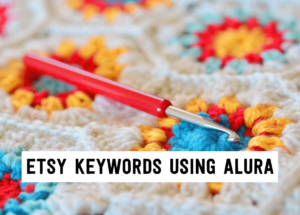
How to find the best Etsy keywords in 3 simple steps using Alura
If you want to be found in search results on Etsy, you need to optimize your product listing for SEO. And if you want to
join
join
There has been a lot of talk in the Etsy community — and I mean A LOT of talk — about Etsy’s payment account reserve policy.
Sellers are frustrated, confused, and in some cases financially devastated by having a hold placed on 75% of their funds for a really long time… as in MONTHS.
So today I’m going to talk about this policy — I’ll give you a quick history of what’s happened and get you up to speed, plus discuss the very important question
Is there any way to avoid having a hold placed on my funds?
So, ready? Let’s dive in.
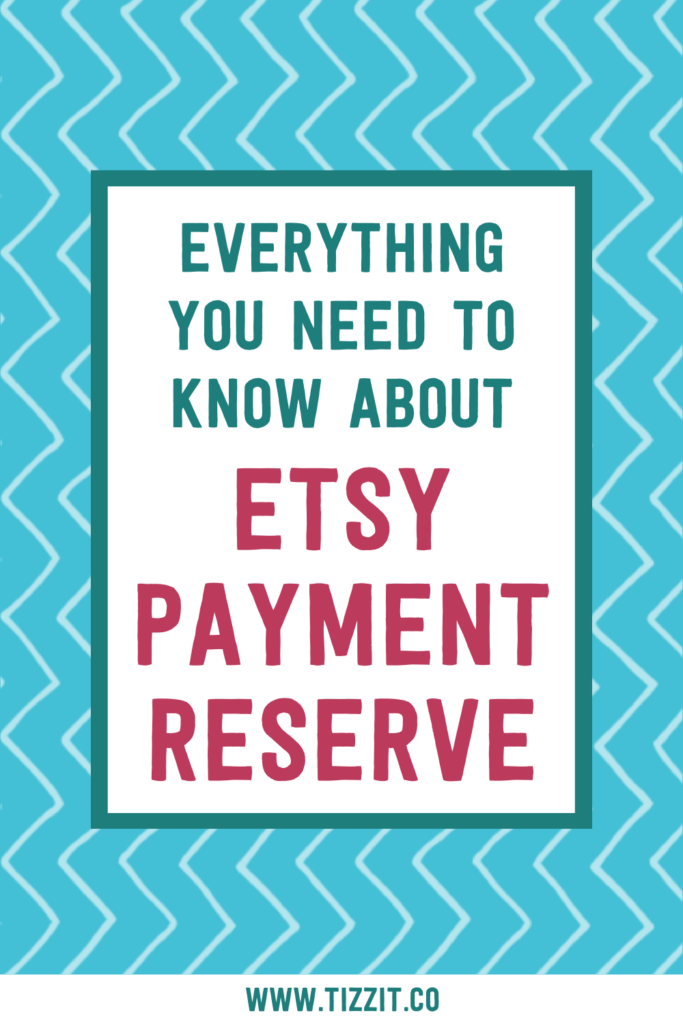
In Feb 2021, Etsy created something they call the Payment Account Reserves Policy.
They framed it as something they were doing to “keep Etsy safe,” saying that with the exponential increase in sales on Etsy they needed to use payment reserves in certain situations “to make sure there are enough funds in a seller’s payment account to cover any unexpected refunds or charges from a sale.“
What this means is:
If Etsy places a reserve on your account, instead of transferring the full sale amount to you, they will only transfer 25% of the total — the other 75% gets put into a reserve account where you cannot access the money until Etsy releases the funds.
The policy states that they release the remaining 75% once the order is shipped with tracking, or in 45 days.
According to Etsy, these are the main factors that may cause them to put a seller’s funds in reserve:
Etsy also states that shops that qualify for Star Seller status do not get placed in reserve, and if you earn your Star Seller badge by meeting all the criteria during the monthly review any reserve in your payments account will be removed within 24 hours.
Of course when Etsy first implemented this policy and reserves started happening there was a lot of pushback and frustration from the Etsy community, and over time Etsy has updated to policy in response to some of this feedback.
Let’s quickly review the “timeline” and how the policy has changed over time:
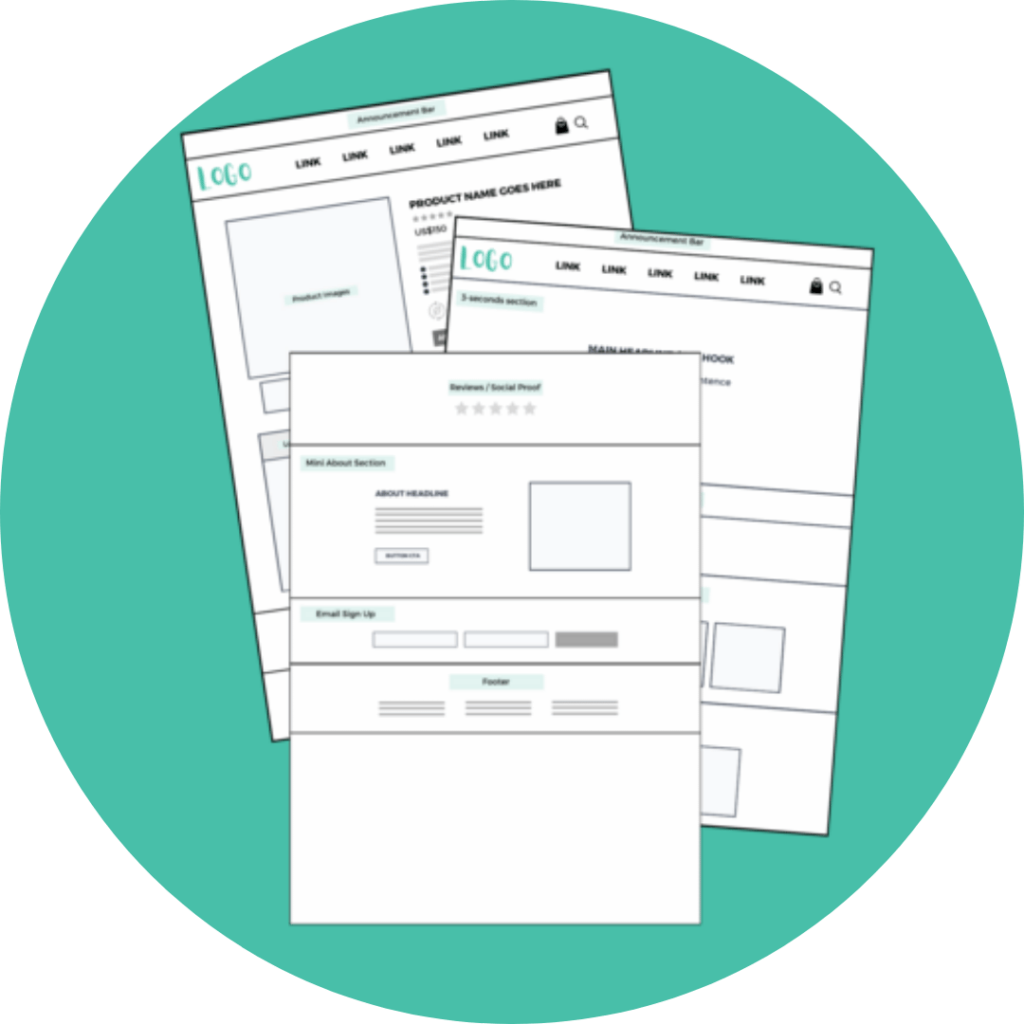
[free] website revenue booster kit
double your website sales with our proven, free website page templates and strategies
The Etsy Payment account Reserves Policy began in February of 2021, and at that point it was only for new shops. With Etsy’s growth explosion it was logical that there were also more scammers popping up on the site and that Etsy was trying to deal with that issue.
In April of 2021 Etsy expanded the program, and now all Etsy shops (established and new) were subject to reserves if (in Etsy’s words) “we believe there may be a high level of financial risk associated with you, your account, your business model, or your transactions.”
According to the very loud and very angry grapevine out there, shops had reserves put on their funds that didn’t make sense: perhaps they had been running their Etsy business successfully and without issues for over a decade, or had tens of thousands of sales or a high yearly gross income with no history of fraud or customer service issues. I’ve heard quite a few stories like these, where the reserve doesn’t feel justified and is not understood by the sellers.
Again according to the grapevine, in May and June 2023 there was a new wave of payment reserves placed on various Etsy accounts.
There have been lots of different stories of people having the Etsy shops put on reserve during this time period even though they had thousands of orders, never a problem, and have been selling successfully on Etsy for many, many years.
But because of either the business model or their delivery model or any of the things that could put them into reserve, they’ve had issues even if they were not new shops and had excellent sales and customer experience history.
Just hang out in any Facebook group with Etsy sellers in it and you’ll find those stories — abundantly.
In August of 2023 Etsy posted in the Etsy Community, promising to make the following changes:
Deb’s comment: So this means that Etsy might hold 75% for some sellers, but a lower percentage for others. While sure that’s great that someone put on reserve may only lose 50% or 25% of their income while it’s on reserve, this makes it even MORE discretionary!
Deb’s comment: I like this, and would like to see what it looks like, like are they really going to tell the seller “do xyz and we’ll remove the reserve?” It seems too good to be true.
Deb’s comment: That’s really good – as this is a BIG issue – but I am not holding my breath as to how quickly this will happen or if it will really be helpful.
We’ll see if these changes actually happen and if they improve this mess that undeserving Etsy sellers are experiencing.
I want to quickly spell out some of the problems that Etsy sellers have experienced after having reserves placed on their Etsy account.
The first issue is somewhat obvious, and that is delays in payment. Sellers are waiting months to receive 75% of their Etsy payments, resulting in financial difficulties for many.
The second problem is lack of transparency. Many Etsy sellers talk about being frustrated because they don’t know WHY the reserve was placed on their account and are not given a clear pathway of what they need to do in order to have the funds released.
Third is the unpredictable nature that funds are withheld. Sellers are living in fear it may happen to them next because there doesn’t always seem to be a predictability of who will have reserves placed on their account and who won’t.
This is a valid frustration in my opinion: I understand the need for Etsy to protect itself, but the random and discretionary part of their policy is really poor. Look, even Amazon has a straightforward set of rules:
You can see here that sellers move through the tiers at set times.
When someone first starts to sell on Amazon, 100% of the funds received for processed transactions are held in reserve for seven days after the transaction processing date, then they are automatically disbursed to their bank account.
When you meet the next set of requirements you get moved to Tier II, where they keep the higher of 3% of payments processed over the past 28 days or the value of all unresolved disputes.
You next have the opportunity to move to Tier II-Plus, where the ONLY amount Amazon keeps in reserve is the value of all resolved disputes.
So you can see that everything is clearly defined so there is no question where you are and why.
The final, and very significant, problem is that this policy is not equitably affecting all sellers.
One example is the fact that non-US sellers are much more likely to have reserves placed on their account because of the tracking requirement. Some Etsy sellers live in countries where tracking is prohibitively expensive, others use tracking but Etsy’s system will not read it, and yet other sellers live don’t have tracking available to them in their country.
A second example of how this policy doesn’t affect all sellers equally is in regard to shop size. It is much easier for large shops to be able to continue running financially than for small shops. For small shops, this loss of income causes cash flow issues and can prevent them from
You can also become a target of the reserve policy because of the type of business you are.
If you post batches of products that quickly sell out, that spike in sales is going to put you more at risk for reserves being placed on your Etsy funds.
Or let’s say you sell baked goods or fresh flower arrangements, something customers order months in advance. When your processing time is months instead of weeks you are marked in the Etsy system as being slow, even if you are delivering EXACTLY when the customer requested!
Now that we’ve outlined the policy and how it is affecting sellers and buyers, I’m sure you’re wondering “How can I avoid having this happen to my Etsy shop?”
There is definitely no “golden ticket” because as I’ve talked about there isn’t always a rhyme or reason when a shop has reserves put on by Etsy, but there are some things you can do to minimize your chances.
Many of the things I recommend are simply common sense, but let’s quickly run through them:
First, if applicable to your product and market type, be sure to fulfill orders in a timely manner and be sure your posted processing times are accurate.
Of course, if you have a business in which people order way ahead (for example for weddings) but don’t want delivery for many months, then this isn’t an option for you.
Another thing you can do is be sure to wait until you have given the products to the shipping carrier before marking them as complete.
I know for some of you it’s not possible or not financially possible, but if it is, use a tracking number for your packages.
Next – and this is another thing that is good to do regardless of any Etsy policy – is to always respond quickly to customer messages. This is easily accomplished by setting up auto replies.
You always want to stay on top of new or modified Etsy seller policies. It’s of course much easier to stay in compliance if you know exactly what the latest policies are!
Simply bookmark the Etsy seller policies page and check the latest revision date to know if you’re up to date.
Numbers 5 and 6 are much bigger undertakings. Number 5 is to Maintain Star Seller status.
This is basically a “get out of jail free” card — as I said earlier, Etsy states that shops that qualify for Star Seller status do not get placed in reserve.
If your shop has had an account reserve placed on it, Star Seller can get it lifted: if you earn your Star Seller badge by meeting all the criteria during the monthly review any reserve in your payments account will be removed within 24 hours.
This isn’t an option that can work for everyone. Some sellers aren’t able to offer tracking, ship orders within a certain amount of time, or respond to messages within 24 hours, so Star Seller isn’t an option that fits with their business model or the country they are located in.
Number 6 is another big – but VERY effective step – which is to create a shop your own website. You can switch to your own website entirely or just use it in addition to your Etsy sales.
This opens the door to SO many growth levers and strategy opportunities — and your future is no longer controlled by Etsy. YOU make the choices, YOU decide how to market and sell your products. And your fate is no longer determined by policies that you have absolutely NO control over.
Now there is also some advice circulating on the internet that I would NOT recommend, so I want to quickly talk about that.
The first one I want to mention is the advice to “cut Etsy fees as much as possible.”
There have been many stories out there that Etsy takes the taxes and Etsy fees out of the 25% released to the seller. Etsy doesn’t officially state this (that I could find) but there are so many stories out there that it is probably true.
And based on that people might recommend cutting your Etsy fees, with the logic being that those fees come out of the 25% that you get if your account is in Etsy reserves.
From a purely logical standpoint that makes sense, but in all honesty if you’re at that point I would recommend putting your time into making your own website, not playing games that may come back to bite you (like affect your Star Seller status etc.).
If you’re going to be on Etsy but are trying to use Etsy the least possible to cut fees… then is it worth being on Etsy?
Another piece of advice I saw on the internet is to stop promoting your Etsy shop anywhere or buy ads for it — because if your shop gets a rush of sales it can trigger Etsy to put a reserve on your account.
Now YES – again the logic here is correct – but bear with me: why would you do this? If you are afraid to promote your shop and get a burst of sales, so much so that you don’t do it, this is again a sign to me that it’s time to get your own website. Then you can promote your shop as much as you want and reap all the benefits with no risk! How are you going to grow your shop if you’re scared of promoting it?
Now you are also probably wondering “Deb, what can I do if this happens to my shop?”
And I wish I had a magic answer for you, but if I’m honest — sometimes there’s not much you can do.
So what I’m going to say is much the same as what I say for everything Etsy does that kind of blows the internet up — like fees going up, new programs, new offsite add policies, etc. etc. — and what I say is much of what you have read in the article today, which is: these are the facts, these are some things you can do to avoid this, but you need to prepare for this potentially happening.
If having this happen to you is really going to be a problem and not going to work for your business model, or not going to work for you because the shipping doesn’t work for you or you have too much at risk and it’s something you’re not feeling comfortable with… then it’s time for you to get out of Etsy and build your own website. (or at least get that website up and running in addition to Etsy!)
For some of you, this payment account reserves policy is going to be the drop that makes the bucket overflow and they’re going to say “Okay, I’ve had enough — I’m going to go off Etsy, or at least create my own website on top of Etsy.”
For others, you’re going to shake your head and think about this new policy as yet another “contract” with Etsy that you’re signing in your head every time Etsy announces a new policy — and you will ask yourself “Okay, this is how it’s going to be on Etsy now, am I am I still in?”
At the end of the day, Etsy is doing this. They are a business and they need to protect their own interests and do what is best for those interests.
If this isn’t working for you and it’s meaningful enough to cause you to break up with Etsy — then by all means do that!
Now if you’re still debating what you want to do and want to learn more about what starting your own website would involve, I have a great article that walks you through how to know if you’re ready for your own website that you will want to read next.
Thanks for reading, and until next time, aurevoir!
you might also like…
related articles

If you want to be found in search results on Etsy, you need to optimize your product listing for SEO. And if you want to
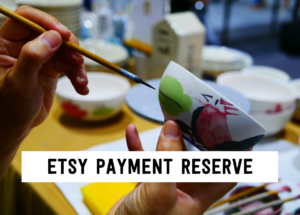
There has been a lot of talk in the Etsy community — and I mean A LOT of talk — about Etsy’s payment account reserve

Anyone who knows me knows that I am a HUGE advocate for using email marketing to grow and scale your handmade business. But you may
disclaimer
subscribe to youtube
THE LAUNCHPAD
get in touch
We acknowledge and give thanks to the Budawang and Yuin people, the Traditional Owners of the land we work and live on. We pay our respects to all Aboriginal and Torres Strait Islander Peoples and elders past, present and emerging.
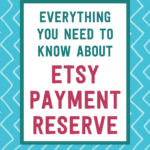
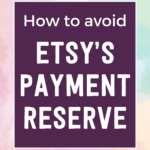

double your website sales with these proven website page templates and strategies
Great article, thank you so much for the honest input. I had much confusion about Etsy. Seems like my first feelings were correct, they are using and holding on to millions of dollars of other people’s money to fund themselves or make money with. It’s not right, people work very hard and then all of a sudden have no income for a month or two or three, at their own discretion! Sounds almost illegal.
Thank you for your comment, Mary!! Yes – it’s important that sellers are made aware of this policy as it will definitely impact their cash flow.